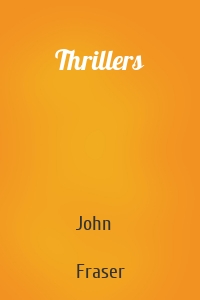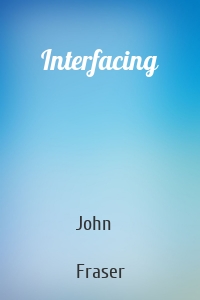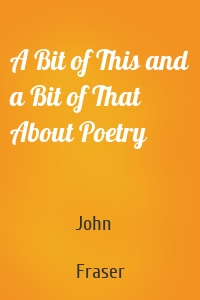John Fraser
10 кн.
Enterprise Risk Management. Today's...
Essential insights on the various aspects of enterprise risk management If you want to understand enterprise risk management from some of the leading academics and practitioners of this exciting new methodology, Enterprise Risk Management is the book for you. Through in-depth insights into what practitioners of this evolving business practice are actually doing as well as anticipating what needs to be taught on the topic, John Fraser and Betty Simkins have sought out the leading experts in this...
| Автор | John Fraser |
Implementing Enterprise Risk Manage...
Overcome ERM implementation challenges by taking cues from leading global organizations Implementing Enterprise Risk Management is a practical guide to establishing an effective ERM system by applying best practices at a granular level. Case studies of leading organizations including Mars, Statoil, LEGO, British Columbia Lottery Corporation, and Astro illustrate the real-world implementation of ERM on a macro level, while also addressing how ERM informs the response to specific incidents....
| Автор | John Fraser |
Thrillers
After years of intellectual nourishment from thrillers, along with the delights of suspense, Fraser explores the thought-processes of representative thriller characters coping with high-tension situations that require intelligent problem-solving and bring their values into a sharper focus. <br><br>With alert empathy, he follows Jack Carter as he hunts down his brother's killers in Ted Lewis's masterpiece Jack's Return Home ("a kind of dark English...
| Автор | John Fraser |
Moments
With 50mm lenses and available light, John Fraser took these classic humanist photos in Minneapolis, New York, London, Nova Scotia, Provence, starting in 1957.<br><br>In the tradition of Cartier-Bresson, there's no cropping. What you see is what was there—street interactions caught lightning fast, informal portraits, oldsters, kids, a Blues group, a campaigning JFK within arms-length, and always the impeccable composition and feel for the...
| Автор | John Fraser |
Interfacing
Faces faces faces–thirty-four, if you count a delightful movie-crew group. Fascinating faces, those major elements in movies, photography, art. Mostly one-shots, taken spontaneously in a human-scale North Atlantic city-by-the-sea in the 1990s. No predatory irony or condescension, but strong reactions– surprise, wariness, delight, self-theatricalizing, etc. <br><br>Interesting individuals, including a couple of poets, two photographers, an artist, a movie-maker, a...
| Автор | John Fraser |
Camera Work (Revised Edition)
A major revision, the merely documentary gone, the symbolist-poetic intensified. Past and present, nature raw and cooked, imagistic juxtapositions, sunlit urn with cypresses, flames glowing as the ground thaws for a midwinter Minnesota grave. Enigmatic mannequin, pensive boys, racing girls, sentinel in the sky. <br><br>You don't need specific locations. This is all about possibilities, emblems, icons, moods, never settling down into a single mode, a single statement....
| Автор | John Fraser |
Pushing Back: Language, Truth, and...
Pushing Back pushes back against GBTs (Great Big Theories) that confine literary discourse, especially poems, to zones where realworld truth-testing and value-judgments are told, "Keep Out; This Means You." Fraser steers between the Scylla of transcendent insights obtained courtesy of Metaphor, Image, and Symbol, Inc., and the Charybdis of literary language sucking its own pretensions down into the Void. A disrespecter of fixed categories and dichotomies himself, he shows by a...
| Автор | John Fraser |
Nihilism, Modernism, and Value
Nihilism, Modernism, and Value consists of three jargon-free lectures addressed to the general reader. It explores a variety of ways in which writers responded to the phenomenon of nihilism in the 19th and early 20th centuries, By "nihilism" here is meant a sense, at times paralyzing, of the instability and perhaps groundlessness of all values. The book goes into some of the factors— psychological, sociological, philosophical—involved in that destabilizing....
| Автор | John Fraser |
A Bit of This and a Bit of That Abo...
A reviewer of JOHN FRASER'S widely praised Violence in the Arts (1973) spoke of encountering in it "an extremely agile and incessantly active mind that illuminates almost every subject that he touches." As a reader of poetry he is in search of felt life and expressive form. He feels his way forward through poems as speech acts, rather than latching onto whatever Big Poetic Truths they are presumed to be disclosing, or treating them as raw material to be given...
| Автор | John Fraser |
Desires; Sixty-five French Poems Pl...
John Fraser, Desires: Sixty-five French poems and one small but famous German one, translated and introduced by John Fraser. <br><br>The core of Desires is a mini-anthology of sixty-five French poems translated by John Fraser and described in the foreword by scholar-translator Benoit Tadié as "beautiful" and "intensely empathetic." Taken from Fraser's major online anthology A New Book of Verse, they belong in an...
| Автор | John Fraser |











